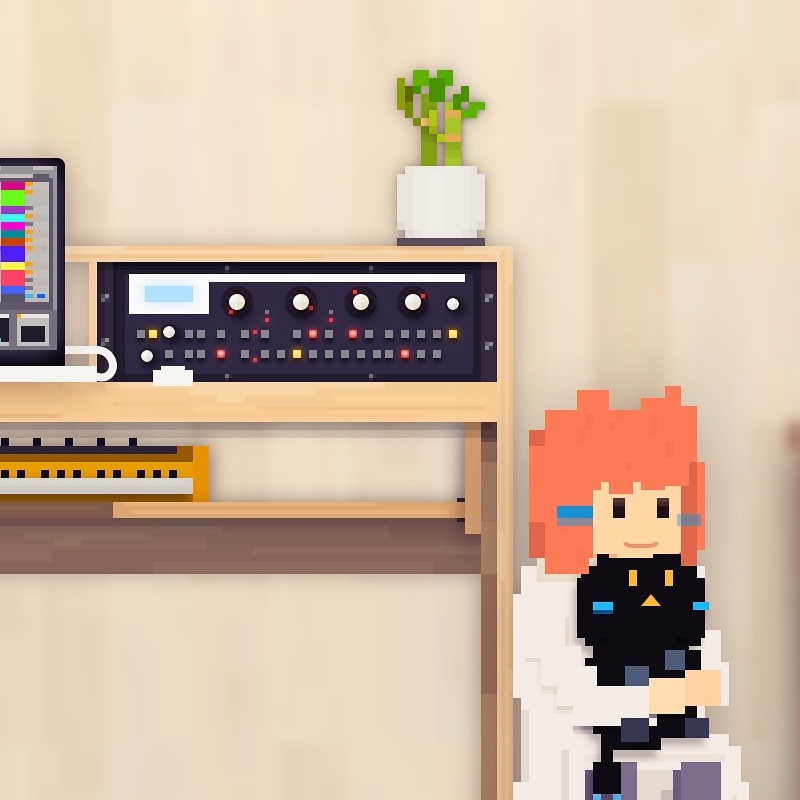Contents
In the preparation part you learned that a key or a scale has a “center”, a note that can evoke the sense of home, rest or landing, which is called a tonal center.
This time we further discuss how a melody moves around the center.
1. Distance from Center
In constructing the story of a melody line, reaching the tonal center is like putting a period in a sentence, a landmark for a melody.
So other than the perspectives like up/down or step/skip, it is worth analyzing whether a line approaches the center or leaving it.
Say so–la–ti–do and fa–mi–re–do goes in the opposite direction (ascend or descend), but they’re the same in that both reach the center by gradual step.
Or, do–so and fa–do(high) is identical in its motion, ascending leap by 5th, but their musical meanings are in complete contrast with each other; One is leaving while the other is landing.
It is reasonable that you see it as one of the fundamental parameters of melodic progressions.
2. Converge or Diverge
We face, however, one problem—We don’t have a common word for this melodic parameter. Here in LMT, therefore, define fixed terms for it; To approach the center is termed Converge and to go away from the center is termed Diverge.
Other factors like ascending/descending or step/skip doesn’t matter. If the interval from the center is narrowed on a melodic progression, the melody is converging, and vice versa.
In the leftmost case the target do is switched to the one an octave higher but still regarded as converging.
Theoretically, convergence is the motion primarily implying that a melody is getting closer to an end, whereas divergence implies a melody is starting to develop. In terms of the tension-release theory, divergence will be the one creating “tension” and convergence releases it.
3. Cadence and Stride
There are some more important motion regarding melodic progression so let me name them.
In LMT, a melodic progression (a succession of several notes) reaching a tonal center is called a melodic Cadence.
The term is borrowed from the theory of chord progression.
- (Melodic) Cadence
- A melodic form of how a line moves until it reaches a tonal center. More specifically, a succession of several notes with a tonal center placed at the end of line.
- How many preceding notes are included in a single “cadence” depends on situations (including lyrics and accompaniments).
- The term can also be used as a verb, meaning “reaching the center”.
And a skip motion that crosses over a tonal center is termed a Stride in LMT.
Strides deserve attention because they ignore the best landing place, the tonal center, and jump over even farther. It is expected that they feel rather energetic to your ears.
Comparing the ones with a stride and the one without it, for one, simply crossing the border of a tonal center will bring an element of surprise. For another, a line with strides inevitably involves both ascending and descending approaches toward a center, forming a stimulating wavy melodic line. Lastly, in terms of expressions, with the area both above and below a center used (without a “period”, stepping on the center), it is suitable for expressing abrupt fluctuation of emotions.
4. Utilization of Strides
“Your Raise Me Up” by Celtic Woman is an eminent example utilizing the power of strides. Firstly, watch how strides are scarcely used.
In the intro and the verse parts, strides appears only once for each at the end of the part. And as the strides occur at lower pitch range, the effects are not much strong here. Also, there’s no stride in the first chorus part.
The key phrase “you raise me up” is sung in the line so–la–ti–do, a very smooth successive ascending stepwise motion that produces a soft and gentle mood.
In the second chorus part, on the other hand, the melody is arranged and the second “you raise me up” involves a stride by ascending 5th.
The melody is literally “raised up”!! And the contrast here is incredible—The key phrase “you raise me up” that appears twice is presented in totally different ways.
| – | The first | The Second |
|---|---|---|
| Solfa | so–la–ti–do | so–re–do–do |
| Direction | only ascending | winding |
| Step/skip | step only | skip, step and maintain |
| Reach the center by | half-step ascending | whole-step descending |
The stride here well represents the surge of emotion, or the strong sense of elevation like attaining the summit of a “mountain”, just as sung in the lyrics🕺
Notice that a 5th leap itself is relatively not so wide; it is the contrast formed between the two phrases and the stimulating curve with a stride that makes the phrase extraordinarily impressive.
5. Elements for Analysis
Now you see that a melody can be analyzed from many different perspectives and finding good combinations of those elements is a key for songwriting.
Since these parameters are perceptible even without any background accompaniments, they’re the properties that a melody owns.
On actual songwriting, however, watching over all these parameters will make you suffocated. It would be best to use these knowledge mostly for analyzing purposes like when you come across a good melody and want to look into its detailed structure.
Summary
- In LMT, a melodic motion approaching a tonal center is called converge and leaving a center is diverge.
- In general, convergent melodies will evoke a sense of rest while divergent melodies will increase musical tension, though other parameters like ascending/descending may affect more prominently.
- In LMT, a melodic progression reaching a tonal center is called a (melodic) cadence.
- In LMT, A melodic motion of leaping over a tonal center is called stride.
